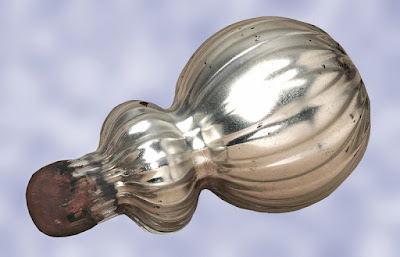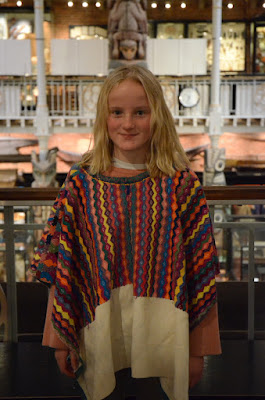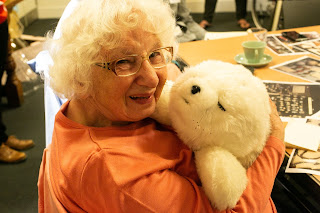I wanted to share some fabulous poems which were generated in response to a creative writing session run at the Pitt Rivers earlier this year.
It all started when I was approached by the lovely Kathryn Bevis, a teacher at the International Studies Centre at Yarnton Manor. She runs a class of English and Creative Writing and was keen to bring her students to do a workshop at the Pitt Rivers. With stories as her theme for the term what better place to come than the Pitt Rivers where there are so many objects with amazing stories linked to them. Sometimes objects have stories literally carved/etched/painted onto them, sometimes they are used to tell stories and sometimes they have the most amazing stories behind them.
In a bespoke workshop students looked at objects which record stories in detail and handled some objects to inspire their creative responses. They also had fun bringing objects to life, thinking carefully about characteristaion and about the conversations the objects might have with each other!
In class Kathryn and her pupils developed their creative responses and I was lucky enough to have these poems drop into my inbox one day.
The Call of the Raven by Alexia Oerter
The raven calls into the night to me,
An unkindness is in the sky awaiting:
They dare me with their cries to fly free.
Their claim ruffles through my body
As I lay down with the stars. I keep hiding from
The raven's call into the night to me.
I walk along the gravelled path and see
Black wings flapping behind me, following
To see if I would dare to fly free.
Wind waving feathers, a lonsome plea; I answer with my arms opening
The raven calling into the night to me.
Claws cluster my bare neck and a sea
Of black soaks my skin and soul, shadows fading
For wings to open and try to fly free.
I battle under the black birds' cries to find the key
Allowing the embrace of the feathers growing;
As I am the raven calling into the night to me,
I join the unkindness, opening my wings to fly free.
This poem was inspired by looking at objects made by the Haida people in the collection such as the Eagle Transformation mask which is used to tell a story about mischevious raven.
 |
| Eagle Transformation Mask Closed 1891.49.8 © Pitt Rivers Museum |
 |
| Eagle Transformation Mask Opened 1891.49.8 © Pitt Rivers Museum |
The Monster with the East Wind by Lisa Duderstadt
Monster with the East wind
they call me, I am, I always was
but you, my only heart, never seem to mind.
For Them I'm the beast which will terrify mankind,
moving my slow thighs, bringing night
always the Monster with the East wind.
But you are a flower, kissed by the sun and kind,
which argues with Them because you believe otherwise.
You, my only heart, never seem to mind.
Even when I played the devil's game you did not resign
being happy to peel another layer from
the monster with the East wind.
As an onion these skins fall one by one
but instead of bright the inside made you cry
because you, my only heart, never have seemed to mind
that I am indeed the monster with the East wind.
This poem was inspired by an African tourist mask which was handled during the session.
They Do Say by Kathryn Bevis
"They do say there be a witch in it, and if you let un out there'll be a peck o'trouble"
Turn me once and turn me double;
My mouth is stopped, a witch inside -
Don't let her loose or there'll be trouble.
Tight as a fist, bright as a bubble,
Here she'll stop now she's been tried.
Turn me once and turn me double.
In the night she curses, grunbles;
In the day she leaps and rides.
She conjures evil, stirs up trouble.
I hear her chant, I feel her chuckle,
mine to cherish, mine to hide.
Turn me once and turn me double.
Clasped together, always coupled -
She's my girl, my fire, my bride.
Don't let her loose or there'll be trouble.
Don't let me drop or I will topple,
Shattering swiftly, scattering wide.
Turn on me and I'll turn double:
When she gets free then you're in trouble.
The final poem was created by the tutor herself in response to the 'witch in a bottle' which is currently on display at the Ashmolean in the special exhibition Spellbound. This glass flask is reputed to contain a witch and has inspired many creative musings.
 |
| Witch in a bottle 1926.6.1 © Pitt Rivers Museum |
It's great to work in partnership with a tutor who believes in getting 'hands-on' with the messy business of words. It was a great experience and hopefully one to be repeated. I'll end this with a note from Kathryn:
"Thank you so much for the wonderful workshop you delivered for my Creative Writing students a few weeks back. I thought I'd share with you some of the poems that they and I produced as a result. You said you don't often get to see the fruits of your work, I hope you like these!
I hope I will be able to bring more writing students with me next academic year. Until then, all best wishes
Kathryn Bevis"
Blog post witten by Becca McVean
Education Officer
Pitt Rivers Museum
(ex secondary school English teacher!)













![Nico shows the group an Inro from Japan, used as a medicine box [1920.16.2.1] Nico shows the group an Inro from Japan, used as a medicine box [1920.16.2.1]](https://blogger.googleusercontent.com/img/b/R29vZ2xl/AVvXsEieLvYOuDoic8YEfHH83Qil-2VBrLkwmKx65AeV8l5-WKNSBjSNGvSLvah0k84nHZH8zEHoVjRoIVYCXB4rgLrC0TBI36FpXp1kluiIMjNC3odG3-2q5r4uGjTHW9CKtdFJn9jZxt3UPvyK/s320/Collections+research+space.jpg)



























